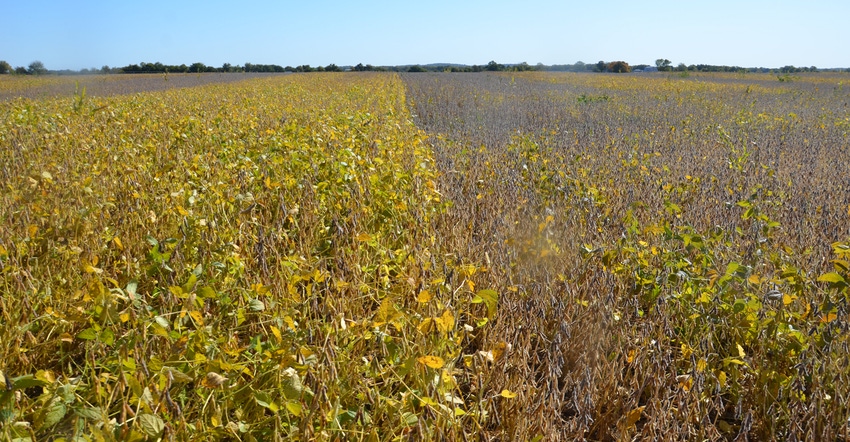
Planting more than one soybean variety in a field isn’t unusual. Some growers want to spread weather risk. If both varieties don’t reach reproductive stages on the same day, you may hit a more favorable weather window with at least one variety.
“If you go with more than one variety, especially if you split the planter, you still want them matched enough that they should mature reasonably close together,” says Steve Gauck, a regional agronomy manager for Beck’s, sponsor of Soybean Watch ’20. “Otherwise, you run the risk of having one variety ready to harvest several days before the other one. That’s a bigger issue with beans, because if the variety that matures first gets too dry, you lose weight below 13% moisture, and you may also see increased shatter loss.”
Related: Proof water makes big difference to beans
One variety selected for the Soybean Watch ’20 field rated at about a Group 3.5. The other was about a 3.7. While that may have been stretching the gap, they should normally mature within a few days of each other, Gauck says. He notes that both varieties have been in the lineup for a year or more. If there are differences in how a soybean matures versus its initial maturity group rating, it should show up in the first year of release, he adds.
Big difference
While Gauck didn’t notice that much difference in maturity during the season, even in early September, the grower began noticing differences as harvest approached. This field could be irrigated, and due to a record-dry September, he irrigated the field multiple times, watching maturity of each variety closely.
When Gauck returned on Oct. 1, one variety was mature, with virtually no leaves and beans in the pods drying down. Yellowish-green to yellow leaves were still hanging on to the fuller-season variety. It was obvious they needed at least another 10 days to mature.
“That’s more difference than we would expect,” Gauck acknowledges. “We were obviously there at the right time to see it, but you would still expect them to mature more closely than they did.”
As it turns out, other farmers have observed a similar phenomenon. “We had a 3.4 and a 3.5 variety in the same field, planted in blocks, not in alternating passes,” one grower in central Indiana notes. “Normally, when we get to the slightly later variety, we can go right on. This year, we had to stop and switch to corn because there were too many butter beans still in the later variety. It was about four days before we could return to them.” His beans weren’t irrigated.
Is there an explanation, or is this another observation to chalk up to a strange year? “We’re still trying to determine what was unique about growing conditions that might have caused it,” Gauck says.
At the same time, some growers in southern Indiana and even Kentucky noticed corn hybrids seemed slow to mature, while others in different parts of the eastern Corn Belt saw normal drydown.
“Every year is different, and sometimes answers are hard to find,” Gauck says. “The best we can say right now is to make decisions based on what happens over multiple years, not in one season.”
About the Author(s)
You May Also Like




